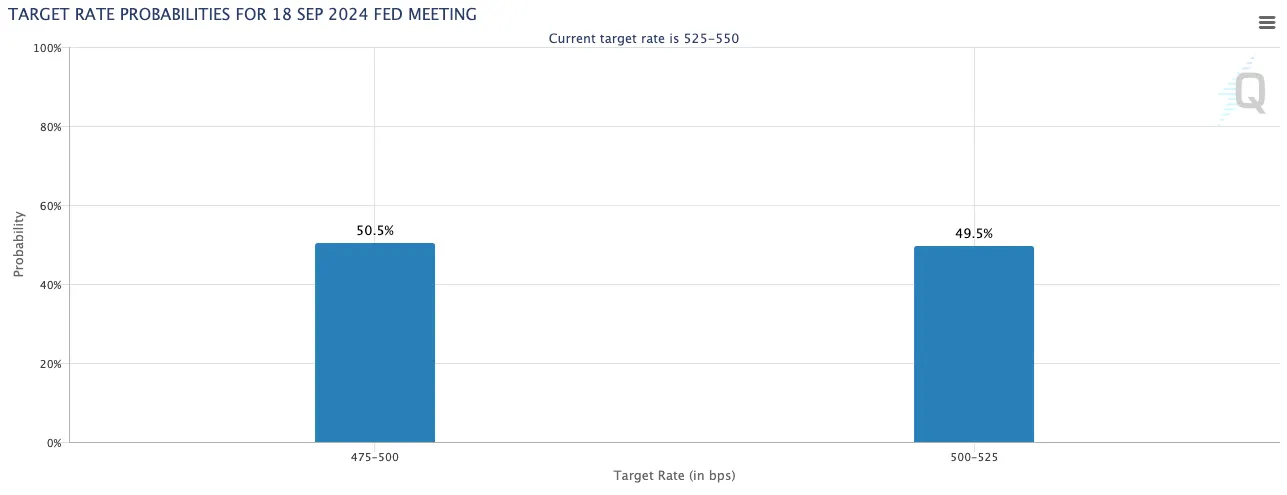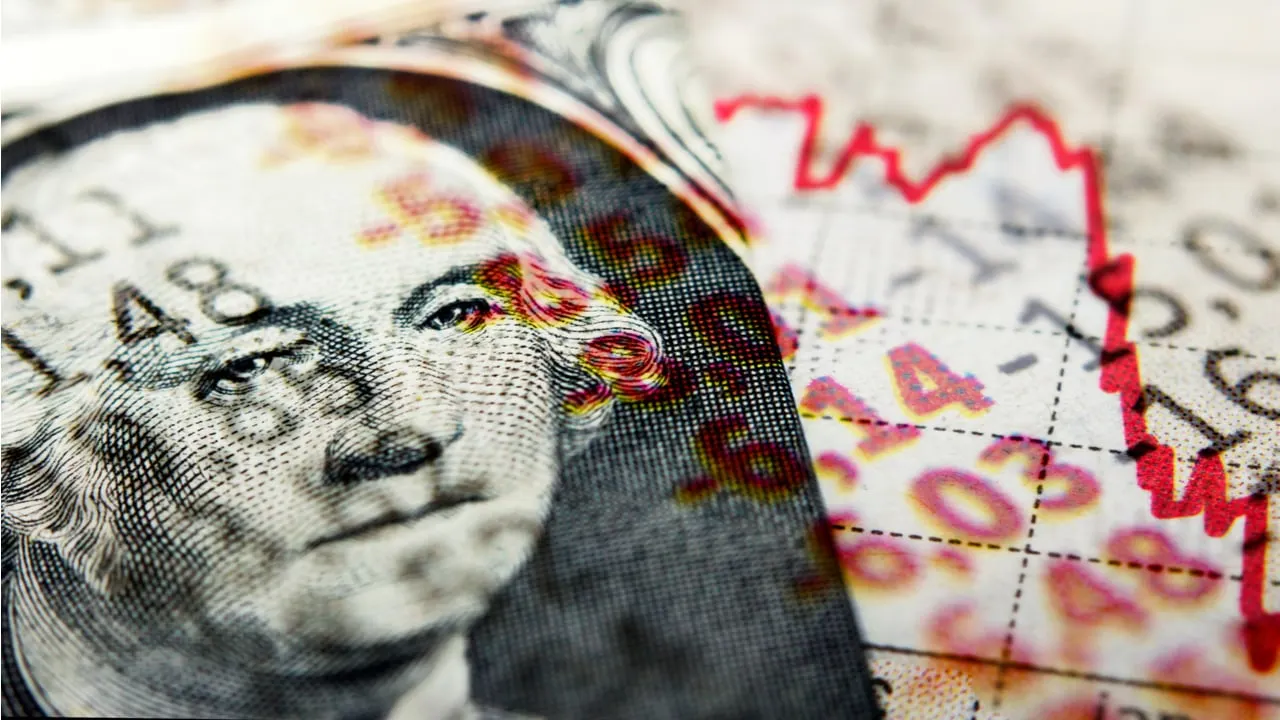In brief
- Inflation ran cooler than expected in the 12 months through July, falling to its lowest level since March 2021.
- Shelter cost inflation is still sticky, likely dissuading the Fed from aggressive rate cuts as so-called core inflation remains robust.
- Bitcoin fell slightly after the report’s release as traders bet more on a 0.25% rate cut.
The price of Bitcoin was little changed Wednesday after a widely watched inflation gauge came in cooler than expected.
The Consumer Price Index (CPI) rose 2.9% in the 12 months through July, the Bureau of Labor Statistics reported Wednesday. Economists expected the index, which tracks price changes across a broad range of goods and services, to rise 3% year over year.
On a monthly basis, consumer prices rose 0.2% compared to June. The increase comes after consumer prices fell month-to-month for the first time since May 2020 in June.
Following the report’s release, Bitcoin's price hovered around $61,200, notching gains of 3.9% over the past day, per data from CoinGecko. Meanwhile, the price of Ethereum and Solana rose 3.9% and 3.8% respectively, to $2,740 and $151.
“It's slightly disappointing,” Dessislava Aubert, senior research analyst at the crypto analytics firm Kaiko, told Decrypt. “But it’s not a bad print because it still clears the way for a Fed rate cut in September.”
Bitcoin’s tepid response to inflation data Wednesday is likely due to wholesale inflation data released Tuesday, Aubert said. As the Producer Price Index showed that prices rose less than forecasted in July, Bitcoin rose from as low as $58,700, leaving little upside, she said.
Inflation slows
Wednesday’s report indicated that inflation is moving in the direction of the Federal Reserve’s 2% target. And the U.S. central bank is expected to ease monetary policy next month after ratcheting its benchmark interest rate to its highest levels since 2007.
The Department of Labor will release data on initial jobless claims Thursday, which captures new claimants filing for unemployment benefits. As the U.S. labor market shows signs of softening, Xu Han, a partner at HashKey Capital’s Liquid Fund, told Decrypt that the report could prove influential if it shows a significant uptick alongside data on Americans’ everyday spending.
“The market is more concerned about short-term growth data,” he said. “Tomorrow we have retail sales and jobless claims, which I think are more pivotal and important than today’s inflation print.”
Inflation has slowed considerably since peaking at 9.1% in June 2022, as higher interest rates weigh on economic activity through increased borrowing costs. Falling for a fourth month in a row, July’s inflation reading was the lowest since March 2021.
However, so-called core inflation, which strips out volatile food and energy prices, remained robust at 3.2% annually, Aubert said. The Fed has been monitoring that measure of inflation closely for underlying trends, along with a focus on shelter costs.
“Some of the sticky components are still there,” Aubert said. “Economists are expecting shelter to go down, but it’s actually contributing to 90% of this month’s increase."
Traders are confident that the Fed will cut interest rates in September; the question now is by just how much. On Wednesday, before the report's release, traders penciled in a 50% chance that the Fed delivers an outsized rate cut of 50 basis points as opposed to a quarter-percentage-point cut, per the CME FedWatch Tool.

After the Wednesday reading, the chance of a smaller rate cut increased to 60%. That’s likely due to the fact that the Fed places a greater emphasis on changes in core inflation, Juan Leon, a senior investment strategist at Bitwise, told Decrypt.
“The market is discounting a bigger cut from the Fed, but still keeping 25 basis points squarely on the table,” he said. “With the core inflation print remaining above 3%, the Fed doesn't yet have the signal to start cutting rates, which is ultimately the catalyst Bitcoin is looking for."
Weaker-than-expected job growth in July spooked global markets early this month, as recession fears briefly pushed Bitcoin below $50,000. At the same time, global markets were roiled by the unwinding of a so-called yen-carry trade, as Japan’s central bank adopted a hawkish monetary policy stance. However, upbeat data on U.S. service jobs assuaged negative outlooks, according to the market maker Wintermute.
“Recent PMI data challenges recession predictions, indicating the U.S. economy is more resilient than previously thought,” Wintermute analysts wrote. “While economic hurdles persist, the outlook is less gloomy than earlier forecasts.”
As the Fed contemplates a likely rate cut, policymakers are effectively walking a tightrope. Cutting interest rates too early could cause inflation to rear its head, while holding them high for too long could tip the U.S. economy into a recession.
Before the Fed decides how to balance its dual mandate of stable prices and maximum employment, it will have the opportunity to mull more data. Personal Consumption Expenditures data, the Fed’s preferred inflation gauge, will be released August 30.
Still, the Fed will receive one last CPI print before delivering September’s rate cut decision, along with August jobs data. Following July’s selloff-inducing labor market reading, Leon said he expects the crypto market to be influenced heavily by those reports.
“Apart from core inflation, labor market data will be important for Bitcoin going forward,” he said. “Continued weakness there would give more ammo for the Fed to begin cutting in September.”
Edited by Stephen Graves and Andrew Hayward
Editor's note: This story was updated after publication to include comments from analysts.

